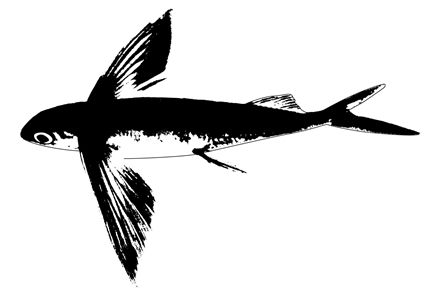General Description
Pectoral fins very large, reaching tail base; dorsal and anal fins similar; pelvic fins large, reaching end of anal fin, all but 1st and 2nd rays of pectoral fin branched in adults. Dark blue above, silvery below, pectoral fins black with narrow white hind margin; pelvic fins transparent with black central area. To 25 cm.
Biology
This is the most frequently encountered flyingfish in cooler oceans, and is usually collected when individuals glide onto boat decks or are washed ashore. These flying fishes escape predators by launching themselves from the water, using their pectoral and pelvic fins to glide for up to 50 m.
Habitat
Subtropical and warm temperate seas, usually in surface waters.
Open water
Distribution guide
Circumglobal. Rare in Victoria.
Species Group
Depth
Water Column
Max Size
25 cm
Commercial Species
No
Global Dispersal
Recorded in Australia
Conservation Status
- DSE Advisory List : Not listed
- EPBC Act 1999 : Not listed
- IUCN Red List : Least Concern





